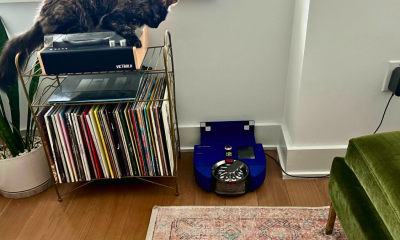Technology
Elon Musk is annoying the hell out of people who work with self-driving cars


Image: DAVID MCNEW/AFP/Getty Images
Elon Musk really went for it this week at Tesla’s Autonomy Day, ripping into widely used self-driving technology like laser sensors and (over)promising to put 1 million self-driving Tesla taxis on the streets next year. These bold claims certainly stirred up some feelings among autonomous vehicle experts and industry leaders.
On Friday, Velodyne president Marta Hall released a long statement — with a lot of ALL CAPS — defending her company’s main product, LiDAR sensors for autonomous vehicles. While acknowledging Tesla’s good work with electrification and car design, she shredded Musk’s “claims” about deploying Teslas without a driver and without “lame” LiDAR sensors. Tesla only uses cameras, ultrasonic sensors, and a radar unit for its sensor suite.
“I personally like the Italian designed Tesla aesthetics and I applaud his leap toward the electrification of cars! Bravo! However, I would not trust its ‘Autonomy,’ claim, because the company has claimed its Auto Pilot feature is, ‘Almost Autonomous.’ IT IS NOT ALMOST AUTONOMOUS and it gives autonomy a bad rap,” Hall wrote in an email statement.
In her statement she also invited Musk to speak at her company’s version of Autonomy Day, Velodyne’s safety summit for autonomous vehicles, which will be held again this fall. Last year, Musk was also invited, but did not attend.
Hall is part of a growing pool of skeptics highly critical of Musk and his robo-taxi dreams.
Lyft COO Jon McNeill, who used to work at Tesla, is also dubious about a robot fleet of Tesla vehicles launching in such a short time. In a Business Insider interview this week, McNeill defended the need for drivers, even as self-driving accelerates, and called out Musk’s ambitious plan. Lyft is investing in self-driving cars and currently operates a self-driving car service with autonomous company Aptiv in Las Vegas.
“I just don’t know if that’s possible to do,” he told the publication about the autonomous fleet from Tesla. He went on to explain why autonomous won’t be an immediate solution, “even with autonomy happening over the next few years — or starting to be deployed over the next few years — we’ll need more drivers in five years than we have today.” He doesn’t think the pace of self-driving cars can keep up with demand for ride-hailing. So human drivers will still be needed, even if robo-cars are an option.
Wall Street analyst Jeff Osborne from investment banking company Cowen wrote in a note after the autonomy presentation at Tesla headquarters in Palo Alto, “The Tesla Network robotaxi plans seemed half baked.”
CNBC collected other impressions about Tesla’s autonomy plans from analysts who cover the self-driving space, like Adam Jones from Morgan Stanley who noted, “We still think removing the safety driver will take many years (if not decades).”
“It’s all hype,” said Steven E. Shladover, a retired research engineer at the University of California, Berkeley who has been involved in efforts to create autonomous driving for 45 years. “The technology does not exist to do what he is claiming.” $TSLAQ https://t.co/61R3qTzxl2
— Ed McCabe (@eddiemac3356) April 22, 2019
Other self-driving experts, like Carnegie Mellon University professor Raj Rajkumar, also called out Musk, as told to the AP: “It sounds like a pipe dream that he’s selling people.”
Burgeoning research about camera placement in autonomous vehicles — and how it can capture 3D imaging like LiDAR if placed higher on the vehicle —could validate Musk’s anti-LiDAR stance, but it doesn’t change how overzealous Musk’s timeline is.

-

 Business6 days ago
Business6 days agoAPI startup Noname Security nears $500M deal to sell itself to Akamai
-

 Business6 days ago
Business6 days agoUS think tank Heritage Foundation hit by cyberattack
-

 Entertainment5 days ago
Entertainment5 days agoNASA discovered bacteria that wouldn’t die. Now it’s boosting sunscreen.
-

 Entertainment6 days ago
Entertainment6 days agoHow to watch ‘Argylle’: When and where is it streaming?
-

 Business5 days ago
Business5 days agoTesla drops prices, Meta confirms Llama 3 release, and Apple allows emulators in the App Store
-

 Business4 days ago
Business4 days agoTechCrunch Mobility: Cruise robotaxis return and Ford’s BlueCruise comes under scrutiny
-

 Entertainment4 days ago
Entertainment4 days ago‘The Sympathizer’ review: Park Chan-wook’s Vietnam War spy thriller is TV magic
-

 Entertainment5 days ago
Entertainment5 days agoDyson 360 Vis Nav robot vacuum review: Dyson should just stick to upright vacuums




















